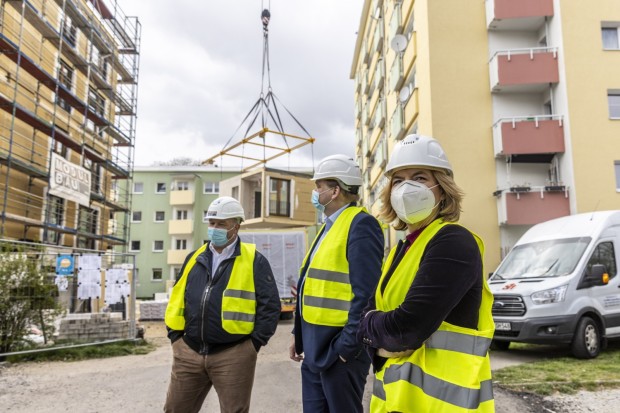One of the methods utilized to enhance the efficiency of the building business is modular construction, which is comparable to 3D printing. In this article, you will gain a deeper understanding of the various types of homes constructed using a unique modular construction method worldwide.

(Photo : Getty Images/Maja Hitij)
Innovative Modular House Construction
Hemeroscopium House by Ensamble Studio, Madrid, Spain
Despite its seemingly complex appearance, this one-of-a-kind residence in Madrid comprises a mere seven constituent elements: a 20-ton block of granite, layered steel truss supports, and sizable prefabricated concrete I-beams and C-channels. Notwithstanding their immense mass, these building elements constitute an open and cantilevered structural system that effectively ventilates the home by incorporating ample light and air. The construction of the parts took only seven days once they were brought to the location, a significant reduction from the customary seven to twelve months required to create a house.
Homb by Skylab Architecture and Method Homes, Oregon, USA
Within the Oregon region, Homb, a modular and prefab building system, was developed through a collaborative effort between Skylab Architecture and Method Homes. This system uses triangle modules that are 100 square feet in size and can be modified on-site to produce a variety of shapes. The system is energy-efficient and uses solar-powered systems, water conservation features, and insulation. Aside from minimizing waste and using eco-friendly materials, it streamlines the design process and makes it possible to make adjustments. It applies to both residential and expansive commercial structures.
The Friends Lab House by AMPS Arquitectura & Diseño, Bentworth, UK
One of the goals of the project known as 'The Friends Lab House' was to create a location on the farm where members of the same family and friends could congregate and spend time together. For its construction, the Contra-Laminated Timber (CLT) method was utilized. This process involves placing each layer of connected timber perpendicular to the layer that came before it. The CLT method reportedly guarantees strength in both tensile and compressive dimensions. Additionally, the construction procedure of such a system takes place on-site for a few days, generating nearly no trash during that time.
Also Read: United Kingdom Builder Develops Flood-Proof Smart Home Technology
Similarities of Modular Construction and 3D Printing
The construction industry uses novel technologies such as 3D printing and modular procedures to improve the building process's efficiency.
Accordingly, 3D printing consists of large-scale printers depositing material layers to produce items. It makes it possible to fabricate building components quickly while maintaining customization, speed, cost savings, design flexibility, and sustainability throughout the process.
On the other hand, modular approaches entail building prefabricated modules off-site to reduce the time spent on construction, improve quality control, save money, increase flexibility, and become more environmentally friendly.
Both strategies aim to increase productivity while simultaneously lowering expenses and enhancing sustainability. 3D printing is centered on the fabrication that takes place on-site, while modular procedures emphasize the production and assembly of standardized modules that take place off-site. These two approaches complement each other in the process of developing construction practices.
Moreover, by implementing 3D printing and modular building techniques, the construction industry is experiencing a change in perspective. These forward-thinking approaches are poised to revolutionize the design and construction of buildings due to their capacity to maximize economic efficiency, environmental friendliness, and environmental sustainability.
Related Article: Construction Safety 101: 5 Ways to Improve Work Efficiently and Safely On Site








